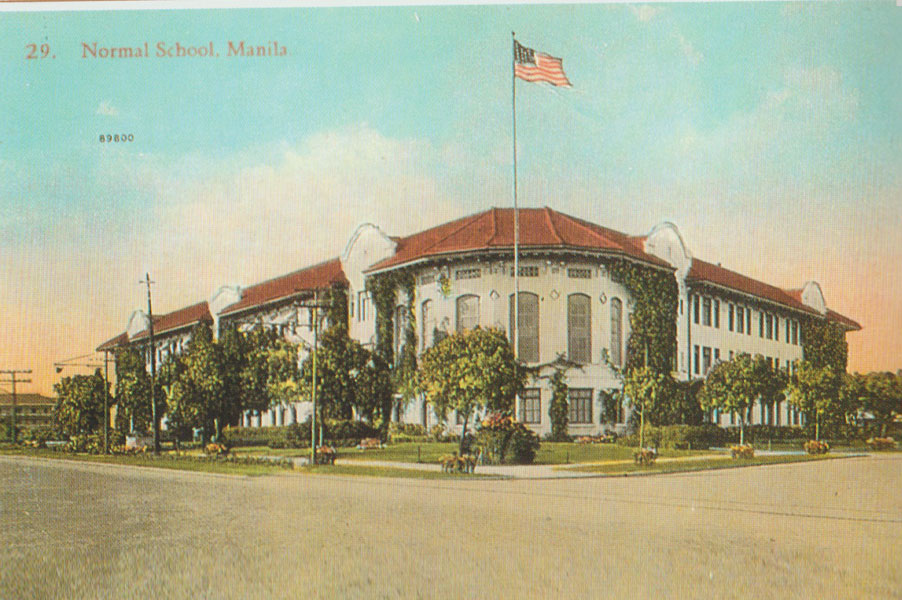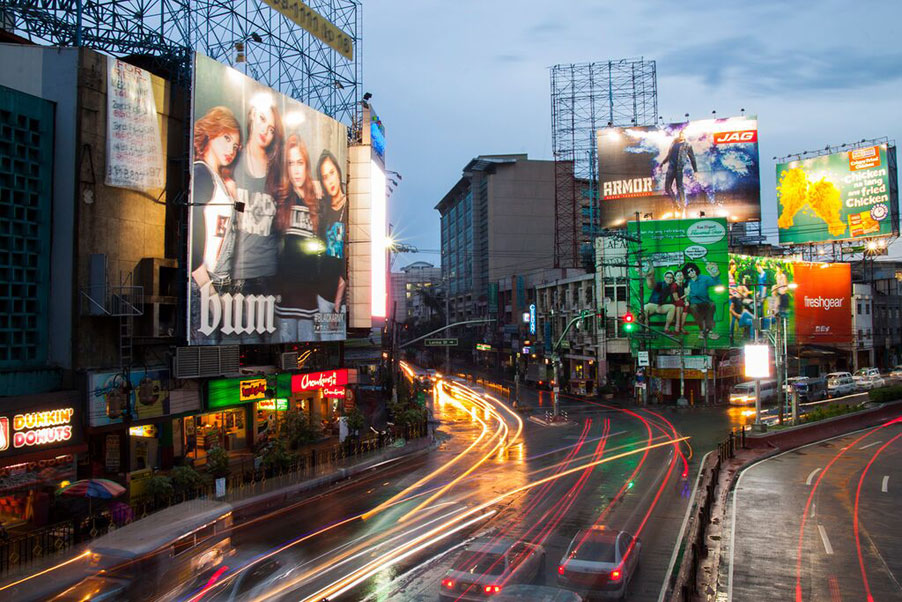Got a tip? Send it to us at manila@coconuts.co.
“University belt” is a generic term given to an area that has a cluster of universities. Metro Manila actually has several of them, but the oldest, largest and most famous is located in the heart of Manila, encompassing the districts of Quiapo, San Miguel, Sta. Cruz and Sampaloc.
Manila’s university belt grew organically, without urban planning whatsoever. There are now at least 27 colleges, universities and vocational schools in the area. Here are some triva about this bustling section.
1. The university belt was supposed to be along Taft Avenue.
In The Americanization of Manila, Cristina Evangelista Torres writes that our colonizers had an urban plan for Manila. City planner Daniel Burnham wanted Sta. Mesa to be the education hub, but the US government wanted educational institutions to be located closer to the government offices in the periphery of what is now Rizal Park. The first school to open along Calle Rizal (what Taft Avenue was called during the early American period) was Philippine Normal College (1901), followed by the University of the Philippines (1908) and Philippine Women University (1919).

The Philippine Normal College on Taft Avenue back in the day.
2. But the U-Belt organically formed in the districts of Quiapo, Sampaloc, San Miguel and Santa Cruz.
Why? Because apart from the markets there, the area was already home to a lot of Manila’s elites, among them, the Hidalgos, the Paternos, and the Nakpils. Before the Americans tried to make Taft Avenue an education hub, there were already two schools operating in Quiapo.
3. Curiously, the original Bilibid Prison was also in the university belt.
But that’s because it was already standing in the area long before the schools opened in the early 1900s. After Bilibid Prison moved out in 1940, the structure was then used as the Manila City Jail.

The original Bilibid Prison, which is now Manila City Jail.
4. Did you know that there are nine schools in the area that are at least 100 years old?
Count them: National University, Manila Law College, University of Manila, San Beda College, Sta. Rita College, La Consolacion, College of the Holy Spirit, and the Centro Escolar University. The grand-daddiest of them all however, is the 400-year-old UST.
5. But the oldest non-sectarian school in the U-Belt area has to be Manila Law.
It was established by Felipe Calderon in 1899, and was originally named Escuela de Direcho or the School of Duties. The first batch of students used to attend lectures in the homes of their professors in the Quiapo district.
6. UP Fine Arts started in Quiapo.
When UP first established in 1908, there were only three colleges: College of Medicine, College of Liberal Arts, and College of Fine Arts. While the first two colleges were located on Taft Avenue, the College of Fine Arts could be found in Quiapo; Inside the home of its first director Rafael Enriquez, on R. Hidalgo Street. In 1926, it moved to its own building and joined the other colleges on Taft Avenue.
7. When it was established in 1901, the National University was called Colegio Filipino.
8. Holy Ghost College was meant for the poor.
In 1913, the Missionary Sisters Servants of the Holy Spirit opened the Holy Ghost College upon the invitation of then Manila Archbishop James O’Harty. The plan was for it to be a free school for the poor street children on Legarda Street.

Modern-day University of Santo Tomas
9. The land where UST stands now was donated.
It was given by Don Antonio de la Riva and his lawyer, Don Alfredo Chicote. They donated the 22 hectares of land to the Dominican order for lending them the money they needed to purchase lands around Sampaloc, presumably what we now know as Sulucan Street. This came from the name of Don Antonio’s company, Sulucan Development Corporation.
10. This Don Antonio de la Riva was really something else.
Apart from donating the land in which UST stands, he also donated the land outside UST to the national government. But he set a condition: The government had to name the street after Spain. In 1952, there was an attempt to change the name of España Boulevard, but the heirs of Don Antonio reminded the government of the terms of the contract.
11. Did you know that the Far Eastern College and the Jose Rizal University were one and the same?
The school, Far Easter College, was founded by Vicente Fabella and Nicanor Maronilla Seva in 1919. In 1922, Mr. Favella decided to end the partnership and take his share of the school. He renamed it The Jose Rizal College. In 1934, Nicanor Reyes bought the controlling share of Far Eastern College and merged it with his school, the Institute of Accounts, Business and Finance, making it the Far Eastern University.
12. Aside from a clock, the UST Clock Tower also used to hold water tanks for the hydraulic engineering laboratory.
13. When UST inaugurated its new main hall in 1927, it did not have statues on the top of its building yet.
These were only added later and in two stages: in 1935, when three figures representing faith, hope, and charity were added to the clock tower. In 1949, statues of historical figures that the university wanted its students to emulate were added. Among them, Saint Agustine, Aristotle, and William Shakespear. The person responsible for this? Faculty member Francesco Monti.
14. When FEU first opened, it was housed in an old cigar factory.
It was located right in the middle of what is now the intersection of CM Recto and Quezon Boulevard. After one year, it was demolished and on the same site, the first FEU building was built. But the government began building Quezon Boulevard so it was demolished yet again. On the third try, the art deco beauty that is the Nicanor Reyes Hall was built.

Far Eastern University as it stands today.
15. After World War II the government gave PUP a lot on Loyola Street.
The land was confiscated by The American Military from the Honganji Church of Japan. In 1998, PUP returned the lot to the Japanese by way of the Philippine-Japanese Friendship Foundation, which in turn turned the property into the Philippine Japanese Alumni Center.
16. UST actually had a radio station in the ‘50s.
The country’s first Catholic radio station, DZST, used to broadcast from the UST main building from 1950 until 1963.
17. The first underpass was in the U-Belt during the ‘60s.
It was built to accommodate the huge volume of traffic. The Lacson Underpass along Quezon Boulevard opened in 1961. It connected the roads leading to and around the Quiapo Church. The vehicular underpass at the intersection of Recto and Quezon Boulevard opened in 1968.
18. Recto used to be called Azcarraga.
Before the street was named after politician Claro Mayo Recto, it was known as Marcelo Azcarraga, the 13th prime minister of Spain who was born in Manila to a Spanish father and mestiza mother.
19. The site where Isetann now stands?
Three famous entertainment complexes were previously on that site. Teatro Zorillo, and then the country’s first Cineplex, the Roman Cinemara, and finally the Isetann Super Cinerama.

Teatro Zorillo, the country’s first cineplex.
20. In 1965, the Holy Ghost College renamed itself to College of Holy Spirit.
21. In 1985, the students of the University of the East flexed their muscles and demonstrated their power.
The school was nearly bought over by the Maharishi Mahesh Yogi’s Transcendental Meditation Movement but the student body did not agree. They boycotted classes and held protests, leading the University back to the original stake holders.
22. Where Centro Escolar University stands in Mendiola was actually part of the San Beda lot.
Where Centro Escolar University stands is actually the southern part of the vast piece of land that the Benedictine monks bought in 1919. The original plan was to use it as the college department of San Beda. But the monks needed the money for a new printing press, so the following year, in 1920, they sold about 3.8 hectares of its property to the Centro Escolar de Senoritas, what we now know as Centro Escolar University.
23. The exodus.
There original U-Belteres have since moved: UP to Diliman and Taft Avenue, Mapua to Intramuros, Adamson to Ermita, MCU to Caloocan, JRU to Mandaluyong and PUP to Sta. Mesa.
24. What is now the University of the East College of Dentistry building used to be the Ever Gotesco Shopping Mall.
25. While the country was panicking over Ninoy Aquino’s death, System Technological Insistute of STI started operations.
It started with two campuses, one of them on España Boulevard.
Photos: Anson Yu/ Archival photos: Philippine Picture Postcards 1900-1920 by Jonathan Best and Filipinas 1870-1989.





Reader Interactions